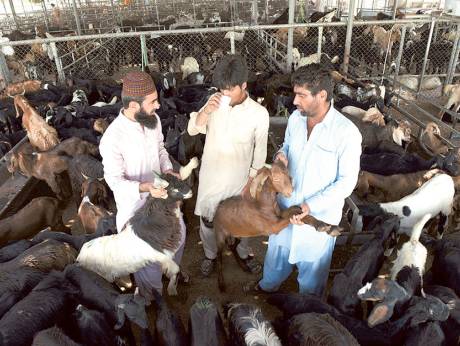LAHORE
Lack of awareness, hot weather and energy shortage, damage around 25 per cent hides of sacrificial animals every Eid-ul-Azha, causing an estimated loss of about Rs 1.5 billion to both tanneries and hide dealers.
Pakistan Tanners Association (PTA) Regional Chairman Azam Malik claimed this while talking to APP here Friday. He added that apart from a direct loss of around Rs 1.5 billion due to animal skin damage, the country might suffer additional loss of over US $ 400 million foreign exchange if an extensive and widespread awareness drive was not launched for the preservation of hides and skins.
Malik, however, appreciated Punjab Livestock Department for timely arranging a meeting with PTA and other stakeholders and dispatching post cards bearing messages for preserving hides and skins on Eid to 25,000 Imams of Masjid in 36 districts of Punjab. In addition, the department also arranged publication and dispatch of 1.6 million pamphlets to district level formations of all NGOs, welfare organisations/educational and health care institutions in Punjab. He was of the view that it would benefit the farmers, stakeholders and to leather sector, the second largest exporting sector of Pakistan.
Malik observed that Pakistan was one of the biggest markets of the raw hides and skins in Asia and about 30-40 per cent of the total production was generated only on the occasion of Eid. He said that Eid-ul-Azha had great importance for the rural economy, as tanning industry purchased about 30-40 per cent of its raw material during Eid.
For the last many years, he mentioned, tanneries had been facing gas and electricity shortage, which was necessary for processing hides before getting putrefaction and this problem damaged the raw hides. The skins, being a perishable item, could not be stored without processing and required an uninterrupted supply of electricity and gas, he maintained.
Azam Malik pointed out that hides were basic raw material for the leather industry to make leather garments, bags, footwear, wallets and gloves, asserting that all these goods were exported that generated a substantial amount of foreign exchange.
He was of the view that hides were generally damaged due to the hiring of unprofessional butchers, while a big percentage of the hides were wasted because of lacking appropriate knowledge of their preservation.
The PTA regional chairman suggested that if the charity and welfare organisations had taken due care in the slaughtering of sacrificial animals, used proper salting immediately after collection of hides and skins as well as made a quick delivery to the buying houses, the leather industry would transform them into finished leather qualitatively mostly for export.




